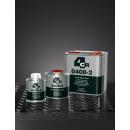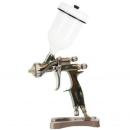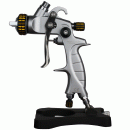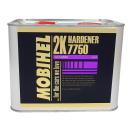Paint Hardener and other bodywork hardeners
See the products concernedHow do I harden paint?
Car paint can be hardened precisely by using a Hardener. Using a Hardener is essential for touching up car or motorbike bodywork. A bodywork Hardener allows the products you're going to apply to your vehicle to dry. It also allows the products you are about to apply to reach a suitable hardness for the rest of your touch-up. Hardener lives up to its name!
Description of paint hardener: why put hardener in paint?
Generally speaking, hardener is a product that can be mixed with paint, primer and Clearcoat, which is why it is transparent. We advise you to mix it well during your preparation to obtain a smooth, homogenous result. Using a Paint Hardener will also help you avoid any defects during application.
Tech'team tip: Never exceed the best-before date to avoid any risks. The product could harden and be very difficult to use.
Why use a Hardener?
Paint Hardener, like other bodywork hardeners, provides excellent resistance after a catalysis reaction. These reactions increase the speed of the chemical process. The Hardener gives a particularly hard structure to the treated surface. To ensure that the chemical reaction is carried out correctly, we recommend that you carefully follow the dosage instructions on the product data sheet. Your final result will depend in part on the success of this process.
How do I use a Paint Hardener?
We'll take Paint Hardener as an example, but our demonstration also applies to all other types of hardener, such as Clearcoat Hardener or Primer Hardener.
Step 1: Add the Paint Hardener a little at a time to the desired product.
Step 2: Mix the Paint Hardener thoroughly to obtain a smooth mixture, then wait about ten minutes to avoid creating air bubbles in your mixture.
Step 3: Spray your mixture using a Spray gun, moving from left to right.
Tech'team tip: it's important to leave a rest period after preparing the mixture to avoid air bubbles forming.
What are the different types of Hardener?
As mentioned above, there are several types of Hardener. It's important to be familiar with all the different types of bodywork Hardener so that you can be sure of getting the result you want.
MULTI-PURPOSE HARDENERS
There are several types of multi-purpose hardener in this category.
They come in different speeds: extra slow, extra fast, fast and standard.
This type of product allows your substrate to dry completely and quickly when exposed to a temperature of between 5°C and 15°C.
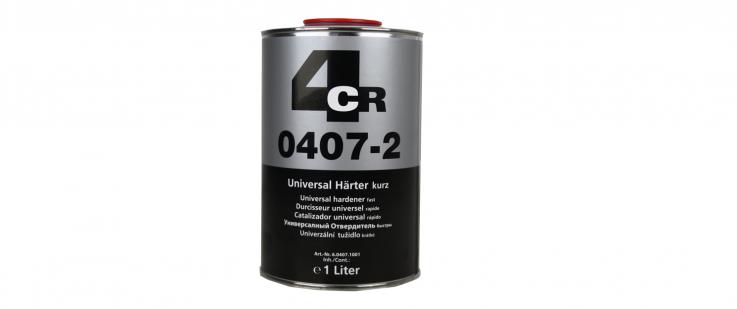
This range of universal hardeners from 4CR mixes perfectly with different types of products (paints, Clearcoats or primers). Its isocyanate-based composition provides protection from the sun.
PUTTY HARDENERS
Putty Hardener is mixed with putty or two-component polyester resin.
The red colour allows you to control the mixture during preparation and ensure that it is homogeneous. We advise you to use a protective cream, gloves and goggles when using this product.
This 4CR BPO resin putty hardener is polyester-based. This product is packaged in 50-gram tubes.
We advise you to read the product information for wood and metal putties carefully.
Tech'team tip: it's important to avoid contamination by rust, metal or chemicals.
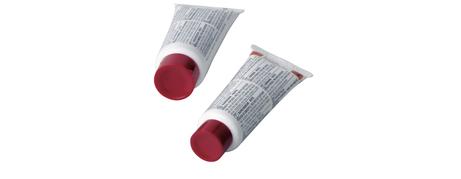
CLEARCOAT HARDENERS
Hardener for Clearcoat is essential for drying paint or primers. In fact, this product is important to ensure complete and effective drying.
The dilution rate can vary depending on the product to be mixed: between 5 and 20%.
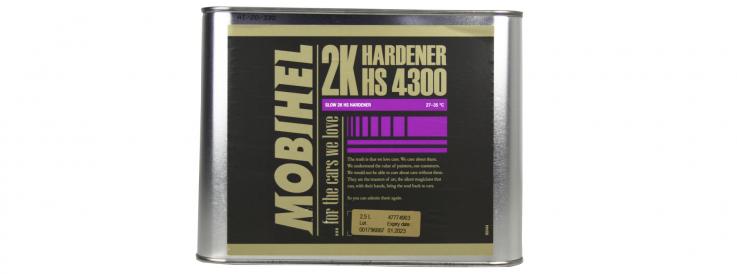
This Hardener from the Mobihel range is acrylic. This range of Hardeners gives your car or motorbike a clean, smooth surface and dries completely and effectively. The advantage of this range is that it adds a shine to your vehicle.
How do I dose the Hardener with a Clearcoat?
First of all, the dosage depends on the product you are going to use, but also on the surface being treated. Each preparation is purely specific to obtain a good result. We recommend that you read the product data sheet carefully, but don't hesitate to contact our technical team for further information on 01.60.27.20.19.
How do I mix resin and Hardener?
Mix slowly, taking care to scrape down the sides and bottom of your beaker. It is important to mix well for about 2 to 3 minutes. If you don't mix properly, you risk seeing defects with the naked eye as well as defects on your surfaces.
Tech'team tip: we advise you to mix in a figure of 8 to obtain a more homogeneous mixture.
How much Hardener for 1L of Paint?
When you have 1L of paint, to find out the exact quantity of hardener you need, simply divide by two: for 1L of paint you'll need 0.5L of paint hardener.
Need more advice on Hardeners?
As you can see, using bodywork hardener requires a certain amount of knowledge and skill! The Tech'team has written this tutorial on Paint Hardener and other types of hardener for you, but our service doesn't stop there. If you have any other questions, please call us on 01 60 27 20 19 or send us an email at this address.
The entire Carross team is on hand to help you find the best Hardener for your future bodywork touch-up or repair!
